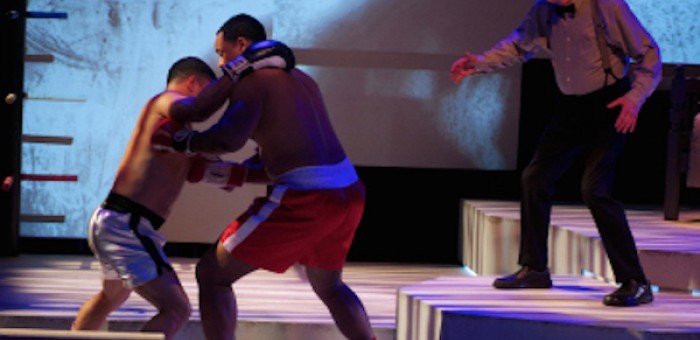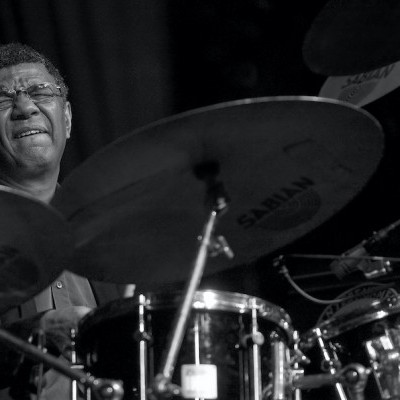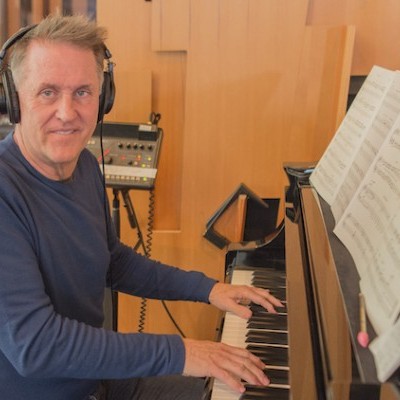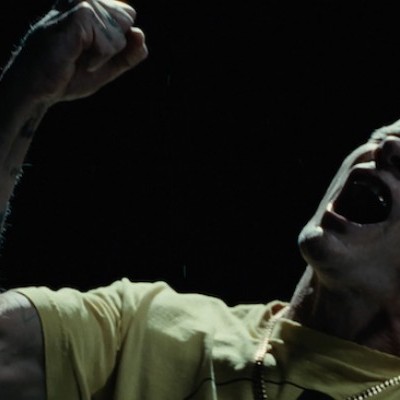Oct 28, 2025 10:47 AM
In Memoriam: Jack DeJohnette, 1942–2025
Jack DeJohnette, a bold and resourceful drummer and NEA Jazz Master who forged a unique vocabulary on the kit over his…

Victor Ryan Robertson (left) Kenneth Kellogg and Mark Hernandez in the production of Terence Blanchard’s Champion: An Opera In Jazz
(Photo: Bill Evans)Trumpeter Terence Blanchard’s ambitious Champion: An Opera in Jazz, about the late bisexual boxer Emile Griffith, had its West Coast debut at the SFJAZZ Center on Feb. 19. A co-presentation of host SFJAZZ and Opera Parallèle, it features music that Blanchard reworked from the original production that premiered at the Opera Theater of St. Louis in June 2013.
The pairing of the two organizations proved a perfect match: Blanchard has been an SFJAZZ Resident Artistic Director, and his quintet performed his A Tale Of God’s Will (A Requiem for Katrina) with Conductor Nicole Paiement and Opera Parallèle at the Center last April.
Founded by Artistic Director Paiement, the San Francisco-based Opera Parallèle specializes in performing contemporary chamber operas in intimate spaces. The SFJAZZ Center dance-floor configuration, with seats removed in front for an orchestra pit that extended around both sides of the bandstand, was a perfect match.
The stage itself was set up on four levels—a single flat platform in front and three elevated platforms at the back spanning from left to right. The highest and furthest to the back platform was the setting for the bedroom of latter day Griffith, masterfully played by bass and role originator Arthur Woodley.
Layers proved to be a theme throughout Champion. Four square and rectangular monitors overlapped to create an collage-like video screen that hung stage right. It housed images such as abstract monochrome nature scenes; the gym where the younger Griffith (charismatically portrayed by bass-baritone Kenneth Kellogg) trains; and the boxing rings where he fought.
Time was also layered, as the elder Griffith reflected back to his upstart youth and even his childhood. Griffith himself was a multi-faceted immigrant from the U.S. Virgin Islands who had aspirations to be a singer, baseball player and hat designer.
Champion opens with surprisingly appropriate overture. A punching bag becomes a rhythmic instrument as it is pummeled hypnotically and with increasing intensity and rapidity at the rear right side of the stage.
The senior Griffith is then introduced in a confused state as he tries to locate a missing shoe. It’s one of several ways that Champion also ties into current events. Concussions and CTE (Chronic Traumatic Encephalopathy) are frequent topics of conversation today, and Griffith suffered from the similar malady of dementia pugilistica, or punch-drunk syndrome.
Act I alternates between the present and flashbacks, going from Griffith’s youth in St. Thomas and his early days in New York to his discovering a gay bar in Manhattan and the historic fight against Benny “The Kid” Paret at which he put his trash-talking opponent into a coma. The final scene is fortified by video footage of the actual fight.
With a chamber orchestra brought aboard by Opera Parallèle and a trio with pianist Edward Simon, double bassist Marcus Shelby and drummer Jaz Sawyer (courtesy of SFJAZZ), Blanchard maximized his broad yet flexible sonic palate. SFJAZZ Collective member Simon was once a member of Blanchard’s quintet, adding another layer of connectivity to the project.
It’s revealed in Act II that Paret died 10 days later. Griffith is deeply haunted by the incident until meeting with his son, Benny Jr. In between, he marries, goes through an extensive losing streak and is the victim of a hate crime.
Though Champion is in English, supertitles of Michael Cristofer’s lyrics are helpfully projected above the stage. Countering the recent #OscarsSoWhite trend, the chorus (which morphs from St. Thomas natives to ringside news reporters and photographers to gay club regulars) was ethnically diverse.
Blanchard’s skills as a composer and storyteller are at full strength here. He’s particularly effective when he has two or even four vocal lines harmonizing at once, which recalls multiple horns on the front line of a

Jack DeJohnette boasted a musical resume that was as long as it was fearsome.
Oct 28, 2025 10:47 AM
Jack DeJohnette, a bold and resourceful drummer and NEA Jazz Master who forged a unique vocabulary on the kit over his…

Goodwin was one of the most acclaimed, successful and influential jazz musicians of his generation.
Dec 9, 2025 12:28 PM
Gordon Goodwin, an award-winning saxophonist, pianist, bandleader, composer and arranger, died Dec. 8 in Los Angeles.…

Flea has returned to his first instrument — the trumpet — and assembled a dream band of jazz musicians to record a new album.
Dec 2, 2025 2:01 AM
After a nearly five-decade career as one of his generation’s defining rock bassists, Flea has returned to his first…

Nov 13, 2025 10:00 AM
For results of DownBeat’s 90th Annual Readers Poll, complete with feature articles from our December 2025 issue,…

To see the complete list of nominations for the 2026 Grammy Awards, go to grammy.com.
Nov 11, 2025 12:35 PM
The nominations for the 2026 Grammy Awards are in, with plenty to smile about for the worlds of jazz, blues and beyond.…








